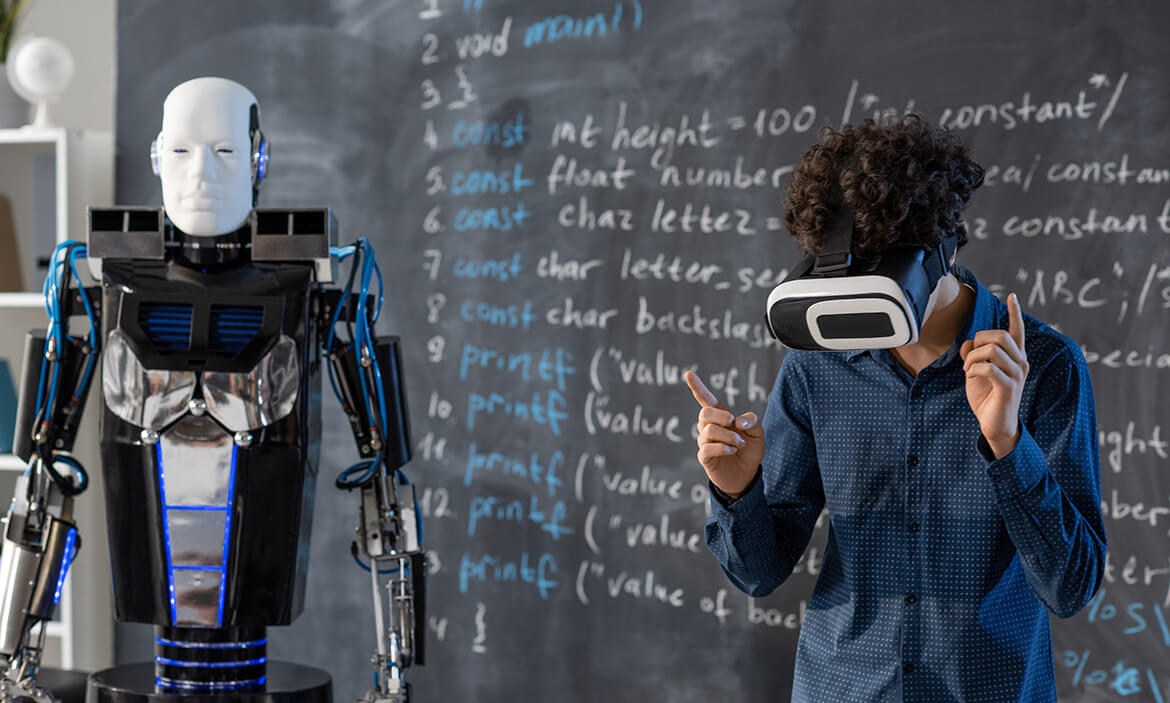Faster, Cost-Effective Life Sciences Translation with Machine Translation Post Editing (MTPE)
Achieve high-quality, regulatory-compliant translations at scale with our hybrid approach, combining machine translation with expert human post-editing. Reduce costs, speed up time-to-market, and ensure precise industry terminology for pharmaceuticals, medical devices, and clinical research.
The Role of MTPE in Life Sciences
Machine Translation Post Editing (MTPE) refines AI-generated translations through human linguistic expertise. In life sciences, where precision, compliance, and terminology consistency are critical, MTPE ensures that translated content meets regulatory, scientific, and patient safety standards. Unlike raw machine translation, MTPE incorporates domain-specific knowledge, quality control, and contextual accuracy, making it suitable for pharmaceuticals, medical devices, and clinical research.
Why MTPE is Critical for Life Sciences Translations
Life sciences translations are subject to strict regulatory oversight, where errors can have legal, financial, and patient safety implications. MTPE provides a scalable, cost-effective solution for handling high-volume, multilingual content while ensuring compliance with industry standards such as ISO 17100, 9001, and 13485. By leveraging AI-assisted workflows with human post-editing, Sesen’s MTPE services enhance efficiency without compromising accuracy, making them ideal for regulatory submissions, clinical trial documentation, and medical device labeling.
The Role of AI and Human Linguists in MTPE
MTPE combines neural machine translation (NMT) with expert human intervention, balancing automation speed with human precision. AI accelerates the translation process by generating an initial draft, while trained linguists:
- Validate technical terminology and regulatory compliance
- Refine sentence structure and readability
- Correct ambiguities and machine-generated errors
This human-in-the-loop approach ensures that translations retain scientific integrity, legal accuracy, and cultural appropriateness, making them fit for global regulatory acceptance and professional use.
Sesen’s MTPE services enable life sciences companies to scale translation workflows, reduce costs, and maintain the highest industry standards.
MTPE vs. Traditional Translation: Which One Is Right for You?
Choosing between Machine Translation Post Editing (MTPE) and traditional human translation depends on factors such as cost, speed, regulatory requirements, and quality expectations. While MTPE leverages AI-driven automation to handle large volumes efficiently, human translation ensures complete linguistic precision and is preferred for highly sensitive or legally binding content.
When to Use MTPE vs. Traditional Human Translation
Criteria | MTPE | Traditional Human Translation |
Speed | Faster turnaround for large-scale projects | More time-intensive due to manual processing |
Cost | More cost-effective for high-volume translations | Higher cost due to full human involvement |
Accuracy | Suitable for content with lower criticality or internal use | Essential for highly specialized and regulatory-sensitive content |
Regulatory Compliance | Requires rigorous human post-editing for compliance | Ensures compliance through expert linguists |
Terminology Consistency | AI-assisted glossaries and TMs help maintain consistency | Human translators apply domain expertise for nuanced accuracy |
Best Use Cases | User manuals, clinical trial protocols, research reports | Regulatory submissions, legal documents, patient-facing materials |
Comparing MTPE and Human Translation for Regulatory Compliance
Life sciences translations must meet strict compliance standards (FDA, EMA, PMDA). While MTPE can be adapted for regulatory content, it requires full post-editing (FPE) by industry-experienced linguists to ensure adherence to guidelines. Traditional translation remains the gold standard for high-stakes documents, particularly those requiring legal or medical precision.
- MTPE with human review: Suitable for IFUs, research reports, clinical study protocols
- Traditional translation: Essential for regulatory submissions, drug labeling, informed consent forms
Quality Benchmarks: Fully Automated vs. Human-Validated Translations
- Raw MT (Fully Automated): Fast but error-prone, suitable only for internal reference.
- Light Post-Editing (LPE): Improves readability but not sufficient for compliance-driven content.
- Full Post-Editing (FPE): Aligns with ISO 17100 and regulatory standards, ensuring human-level quality.
- Traditional Human Translation: Best for accuracy-sensitive, legally binding, and high-risk materials.
Sesen’s MTPE workflow optimizes efficiency while maintaining the highest quality standards, ensuring compliance and cost-effectiveness for life sciences translations.
Our Approach to Life Sciences MTPE
Sesen’s Hybrid Translation methodology combines neural machine translation (NMT) with expert human post-editing to deliver fast, cost-effective, and regulatory-compliant translations. By leveraging advanced linguistic AI with rigorous human validation, we optimize quality, accuracy, and consistency while reducing turnaround times and costs.
Hybrid Translation: AI-Assisted, Expert-Validated
Our hybrid translation approach integrates machine-generated drafts with human linguist oversight, ensuring technical precision and regulatory alignment. This process enhances scalability and cost efficiency without compromising on life sciences industry standards.
Key Benefits:
- Accelerated delivery without sacrificing accuracy
- Terminology consistency with integrated translation memories
- Regulatory alignment through expert review and validation
Types of Post-Editing for Life Sciences
Sesen offers two levels of post-editing, depending on the content criticality and compliance requirements:
- Light Post-Editing (LPE) – Fast & Readable
- Focuses on basic readability and fluency
- Retains machine-generated structure with minimal corrections
- Suitable for internal documentation, research reports, and non-regulatory materials
Use Case: Rapid processing of high-volume, low-risk content
- Full Post-Editing (FPE) – Compliance & Precision
- Ensures regulatory accuracy, linguistic clarity, and technical correctness
- Adheres to EMA, FDA, and ISO standards
- Reviewed by subject-matter experts (SMEs) to validate medical and scientific integrity
Use Case: Regulatory submissions, clinical trial documentation, medical device labeling
ISO-Certified Quality Assurance Process
Sesen’s MTPE workflows adhere to global quality and regulatory standards, ensuring that translations meet the highest compliance, accuracy, and security benchmarks:
- ISO 17100 – Translation quality & process management
- ISO 9001 – Quality management system for continuous improvement
- ISO 13485 – Compliance for medical device documentation
With Sesen’s ISO-certified MTPE process, life sciences companies achieve high-quality translations at scale—without compromising compliance or precision.
MTPE for Regulatory Compliance in Life Sciences
Regulatory compliance in life sciences translation demands precision, consistency, and adherence to industry standards. Sesen’s MTPE workflow is optimized to meet the stringent linguistic, scientific, and legal requirements set by global regulatory bodies, including the FDA, EMA, and PMDA. By combining machine translation efficiency with expert human validation, our MTPE services enable life sciences organizations to accelerate market approvals while maintaining compliance and accuracy.
How MTPE Supports Regulatory Submission Requirements
Regulatory submissions require linguistic accuracy and scientific precision to prevent approval delays, legal risks, or patient safety concerns. Sesen’s Full Post-Editing (FPE) process ensures that MT-generated content meets the exacting standards of:
- U.S. FDA (Food and Drug Administration) – Drug applications, medical device labeling, and clinical trial protocols
- European Medicines Agency (EMA) – Summary of Product Characteristics (SmPC), Patient Information Leaflets (PIL), and regulatory dossiers
- Pharmaceuticals and Medical Devices Agency (PMDA – Japan) – Medical device documentation, drug approval submissions, and compliance reports
Our hybrid translation approach enhances regulatory submissions by:
- Reducing time-to-market with optimized workflows
- Ensuring terminology consistency through AI-assisted glossaries
- Minimizing translation risks with expert human post-editing
Ensuring Compliance with Industry-Specific Terminology and Standards
Life sciences translations require strict adherence to standardized terminology and international regulations. Sesen’s MTPE services integrate:
- Medical and Pharmaceutical Standards – Alignment with MedDRA, SNOMED CT, and other global medical lexicons
- Clinical Trial Terminology – Consistent translation of ICFs, study protocols, and investigator brochures
- Biotechnology & Scientific Integrity – Accurate rendering of scientific research, patents, and technical documentation
Our process ensures that translated content:
- Maintains technical accuracy and readability for healthcare professionals and regulatory reviewers
- Complies with country-specific regulations and linguistic nuances
- Integrates AI-powered translation memory (TM) and terminology databases for standardization
Validation and Accuracy for Patient Safety and Legal Considerations
Errors in regulatory translation can lead to serious legal, financial, and health risks. Sesen’s ISO 17100, 9001, and 13485-certified MTPE process includes:
- Human Linguist Review – Subject-matter experts verify medical, pharmaceutical, and biotech content
- Regulatory Compliance Checks – Ensuring alignment with global health authorities
- Legal & Patient Safety Validation – Preventing misinterpretation in drug labels, clinical trial forms, and medical device instructions
With Sesen’s MTPE services, life sciences companies achieve high-accuracy, regulatory-approved translations—enhancing compliance while reducing costs and turnaround times.
Benefits of Sesen’s MTPE Services
Sesen’s Machine Translation Post Editing (MTPE) services provide a scalable, cost-effective, and regulatory-compliant solution for life sciences translations. By integrating AI-assisted localization with expert human post-editing, we deliver high-quality, secure, and terminology-consistent translations while reducing costs and turnaround times.
Faster Turnaround Times for Large-Scale Projects
MTPE enables high-volume translation processing without compromising accuracy. By leveraging neural machine translation (NMT) and AI-assisted workflows, Sesen accelerates translation timelines for:
- Regulatory documentation (EMA, FDA, PMDA submissions)
- Clinical trial protocols & investigator brochures
- Medical device instructions for use (IFUs)
Our hybrid approach allows for:
- Up to 50% faster turnaround compared to traditional translation
- Efficient content updates for version-controlled regulatory documents
- Scalable processing of multilingual datasets for global submissions
Cost Savings Compared to Full Human Translation
- Refining AI-generated text for compliance
- Ensuring clarity, accuracy, and linguistic consistency
- Correcting domain-specific terminology errors
Cost-Efficiency Gains:
- 30-60% cost reduction versus fully human translation
- Optimized resource allocation for high-priority regulatory content
- Scalable pricing models based on project complexity and compliance needs
Consistency in Terminology and Style
Maintaining uniformity in scientific and regulatory language is critical for life sciences translations. Sesen’s MTPE process integrates:
- AI-powered translation memory (TM) and terminology databases
- Custom glossaries aligned with regulatory standards (MedDRA, SNOMED CT, WHO-DD)
- Style guides to ensure linguistic and branding consistency
- Ensures compliance with regulatory terminology
- Minimizes translation variability across multilingual content
- Improves review efficiency by reducing manual corrections
Life Sciences Sectors We Serve with MTPE
Sesen’s Machine Translation Post Editing (MTPE) services are designed to support the complex, high-stakes translation needs of life sciences organizations. Our hybrid approach—combining AI-assisted translation with expert human post-editing—ensures regulatory compliance, accuracy, and efficiency across multiple life sciences sectors.
Pharmaceuticals
Pharmaceutical companies rely on fast, high-volume translations for global market access. Our MTPE services provide cost-effective, regulatory-compliant translations for:
- Regulatory Submissions & Dossiers (FDA, EMA, PMDA, NMPA)
- Drug Labeling & Package Inserts
- Pharmacovigilance Reports (ICSRs, PSURs, RMPs)
- Manufacturing SOPs & GMP Documentation
Ensures regulatory approval while reducing translation turnaround times
Medical Devices
With evolving global regulations, accurate and compliant translations are essential for medical device manufacturers. Our ISO 13485-certified MTPE process supports:
- Instructions for Use (IFUs) & User Manuals
- Clinical Evaluation Reports (CERs) & Technical Documentation
- UDI & Regulatory Submissions for MDR/IVDR Compliance
- Software Localization for Medical Devices
Ensures MDR/IVDR alignment while maintaining terminology consistency
Clinical Research & Trials
Sesen’s MTPE services support faster, more cost-effective translation workflows for global clinical studies, ensuring regulatory and patient communication accuracy. We specialize in:
- Clinical Trial Protocols & Investigator Brochures (IBs)
- Informed Consent Forms (ICFs) & Patient-Facing Documents
- Case Report Forms (CRFs) & Adverse Event Reports
- Clinical Study Reports (CSRs) for Regulatory Agencies
Accelerates trial timelines while ensuring patient safety & compliance
Biotechnology & Life Sciences Research
Biotech firms and research institutions require scientific precision and terminology consistency for:
- Scientific Publications & Research Papers
- Patent Translations for Drug Discovery & Intellectual Property
- Genomics & Bioinformatics Reports
- Regulatory & Compliance Documentation for Emerging Therapies
Enhances accuracy in scientific communications across global markets
Sesen’s MTPE services enable life sciences organizations to achieve high-quality, cost-effective translations—ensuring compliance, efficiency, and scalability for global operations.
Optimizing AI & MTPE for Life Sciences
Sesen’s Machine Translation Post Editing (MTPE) services combine cutting-edge AI technology with expert human validation to deliver fast, accurate, and compliant translations for life sciences. Our approach integrates neural machine translation (NMT), domain-specific terminology management, and ISO-certified quality assurance to ensure linguistic precision, regulatory compliance, and cost efficiency.
MTPE Workflow: From AI-Generated Text to Expert Validation
Our hybrid translation process follows a structured workflow to maximize efficiency and quality:
- AI-Generated Translation – Neural Machine Translation (NMT) produces a preliminary draft, leveraging custom-trained language models for life sciences.
- Linguistic & Regulatory Pre-Processing – Automated filters flag inconsistencies, terminology mismatches, and potential errors before human review.
- Expert Human Post-Editing – Certified linguists refine the translation for clarity, accuracy, and compliance, applying:
- Light Post-Editing (LPE): Minimal adjustments for readability.
- Full Post-Editing (FPE): In-depth revision for regulatory and scientific accuracy.
- Terminology & Style Validation – Content is cross-checked against translation memories (TM), regulatory glossaries (MedDRA, SNOMED CT), and industry guidelines.
- Final Quality Control & Delivery – ISO 17100-certified reviewers ensure compliance, linguistic accuracy, and formatting consistency before final delivery.
Outcome: Faster, cost-effective, and high-quality translations optimized for life sciences.
Integration with Neural Machine Translation (NMT) Systems
Sesen utilizes advanced NMT technology to enhance translation efficiency, integrating:
- SesenGPT AI-powered translation – Secure, proprietary large language models optimized for medical and pharmaceutical content.
- Open-Source Large Language Models (LLMs) – Adapted for scientific and regulatory terminology.
- Custom-trained engines – Optimized for specific life sciences domains to enhance accuracy.
- Accelerates translation turnaround times while maintaining linguistic precision.
- Continuously improves through AI-assisted feedback loops for higher-quality output.
Advanced Terminology Management & Translation Memory (TM) Usage
Ensuring consistency in scientific and regulatory content is critical for life sciences. Sesen’s AI-driven terminology management integrates:
- Translation Memory (TM) – Reuses pre-approved translations to ensure accuracy and reduce costs.
- AI-powered glossary management – Enforces standardized medical and pharmaceutical terminology.
- Regulatory database integration – Aligns with MedDRA, WHO-DD, EMA, FDA, and ICH terminology.
- Reduces human intervention while ensuring compliance and accuracy.
- Improves linguistic consistency across large-scale multilingual projects.
With Sesen’s technology-enabled MTPE, life sciences companies achieve AI-driven efficiency while maintaining human-validated precision—ensuring faster, more reliable, and cost-effective translations.
How to Get Started with Sesen’s MTPE Services
Sesen provides customized Machine Translation Post Editing (MTPE) solutions designed specifically for life sciences organizations. Whether you need regulatory-compliant translations, clinical trial documentation, or multilingual labeling, our expert team ensures a seamless onboarding process tailored to your requirements.
Customized MTPE Solutions for Your Specific Needs
Every life sciences project has unique regulatory, linguistic, and technical requirements. Sesen’s team works with you to:
- Assess the complexity and compliance level of your translation needs
- Define the appropriate MTPE workflow (Light or Full Post-Editing)
- Integrate terminology databases, translation memories (TM), and glossaries
- Ensure regulatory alignment with ISO 17100, 9001, and 13485 standards
Our solutions are scalable, allowing for large-volume processing while maintaining quality and consistency.
Contact Our Expert Team for a Free Consultation
Need guidance on whether MTPE or traditional human translation is right for your project? Our life sciences translation specialists offer a free consultation to:
- Evaluate your content type, language pairs, and compliance requirements
- Recommend the most efficient and cost-effective translation strategy
- Provide a customized project plan for optimal quality and turnaround times
Get started today—contact us for a free consultation and discover how Sesen’s MTPE solutions can accelerate your global translation workflows.
Onboarding Process: From Upload to Delivery
Our streamlined onboarding process ensures fast and efficient MTPE execution with full transparency and quality control:
- Step 1: Secure File Upload – Submit documents via our AWS-hosted translation management system for confidential processing.
- Step 2: MTPE Processing – Our hybrid workflow applies SesenGPT-powered NMT, followed by expert human post-editing and regulatory validation.
- Step 3: Quality Review & Delivery – Final content undergoes ISO-certified quality checks before secure delivery in your preferred format.
- Fast, scalable, and secure translation workflows tailored for life sciences.
- End-to-end support from consultation to final delivery.
Start your MTPE translation project today—contact Sesen’s expert team for a free consultation.
Frequently Asked Questions (FAQs) – MTPE for Life Sciences
Here are answers to the most commonly asked questions about Machine Translation Post Editing (MTPE) in life sciences, covering accuracy, compliance, technology, and suitability for regulatory requirements.
What is the difference between Light Post-Editing (LPE) and Full Post-Editing (FPE)?
Light Post-Editing (LPE) involves minimal corrections to improve fluency and readability, making it suitable for internal reports, training materials, or non-critical documents.
- Fixes grammatical errors and awkward phrasing
- Retains most of the machine-translated content
- Prioritizes speed and cost savings over precision
Full Post-Editing (FPE) is a comprehensive revision process where expert linguists ensure regulatory accuracy, terminology consistency, and linguistic precision. It is ideal for clinical trial documentation, regulatory submissions, and patient-facing materials.
- Ensures compliance with FDA, EMA, PMDA, and ISO 17100 standards
- Verifies medical and scientific accuracy using subject-matter experts (SMEs)
- Aligns translations with industry glossaries (MedDRA, SNOMED CT, WHO-DD)
How do you ensure accuracy in MTPE for life sciences?
Sesen maintains high translation accuracy through a combination of technology, domain expertise, and quality assurance protocols:
- Custom-trained Neural Machine Translation (NMT) – SesenGPT optimizes translations for medical, pharmaceutical, and regulatory terminology.
- Expert Human Review – Certified linguists and life sciences subject-matter experts (SMEs) validate the final output.
- Regulatory Compliance Checks – Ensures adherence to EMA, FDA, and ICH standards.
- Translation Memory (TM) & Terminology Management – Ensures consistency across large-scale projects.
- ISO-Certified QA Process – MTPE follows ISO 17100, 9001, and 13485 standards.
Outcome: Regulatory-grade translations that maintain scientific and linguistic integrity.
What machine translation engines does Sesen use?
Sesen uses a customized NMT ecosystem, integrating:
- SesenGPT AI-powered translation – Optimized for life sciences regulatory content.
- Open-Source Large Language Models (LLMs) – Adapted for scientific and pharmaceutical terminology.
- Custom-Trained MT Engines – Built for specific therapeutic areas and medical disciplines.
- Secure AWS-hosted processing for data confidentiality
- Adaptive learning for ongoing translation quality improvements
- Terminology consistency through integrated AI-driven glossaries
Is MTPE suitable for regulatory submissions?
Yes, but only with Full Post-Editing (FPE). Regulatory agencies such as the FDA, EMA, and PMDA require highly accurate, validated translations, and raw machine translation alone does not meet compliance standards.
For regulatory documents, Sesen’s MTPE ensures:
- 100% human validation for terminology accuracy and readability
- Compliance with industry-specific terminology (MedDRA, SNOMED CT, WHO-DD, ICH guidelines)
- ISO 13485-compliant review process for medical device translations
FPE allows companies to leverage MTPE efficiency while maintaining regulatory acceptance.
How does Sesen handle data security in MTPE translations?
Life sciences translations involve highly confidential patient, clinical, and regulatory data. Sesen ensures data security through:
- AWS-Hosted Translation Management System (TMS) – Secure cloud infrastructure
- End-to-End Encryption – Protects sensitive medical documents
- Role-Based Access Controls – Restricts access to authorized linguists
- GDPR & HIPAA Compliance – Meets global data protection regulations
Sesen guarantees secure, compliant, and confidential MTPE workflows.
What types of life sciences documents are best suited for MTPE?
MTPE is ideal for high-volume, structured content where AI-driven efficiency can enhance translation speed while maintaining accuracy.
- Clinical Trial Documents – Protocols, Investigator Brochures, Study Reports
- Medical Device Manuals – Instructions for Use (IFUs), User Guides
- Pharmaceutical Documentation – Drug labeling, Pharmacovigilance reports
- Scientific Publications & Research Papers – Non-patient-facing research materials
For regulatory-critical documents, Sesen applies Full Post-Editing (FPE) to ensure compliance.
How does Sesen’s MTPE compare to fully human translation?
Aspect | MTPE (with Post-Editing) | Traditional Human Translation |
Speed | Faster turnaround (AI-assisted) | Longer due to manual translation |
Cost | More cost-effective for large volumes | Higher cost due to full human involvement |
Regulatory Compliance | Suitable with Full Post-Editing (FPE) | Always compliant |
Accuracy | High with human validation | Highest accuracy for complex materials |
Best for | Clinical trials, device manuals, reports | Regulatory submissions, legal documents |
MTPE provides efficiency, but fully human translation remains essential for high-risk regulatory materials.
How do I get started with Sesen’s MTPE services?
It’s simple!
Request a Free Consultation – Our life sciences translation experts assess your needs.
Customized MTPE Solution – We define workflow, terminology management, and quality requirements.
Secure File Upload – Submit documents via our AWS-hosted TMS.
AI + Expert Post-Editing – We apply SesenGPT-powered MTPE with human review.
Final QA & Delivery – Compliance-checked, industry-standard translations ready for use.
Contact us today to discuss your project and streamline your life sciences translation workflow!
Get High-Quality, Cost-Effective Life Sciences Translations
Streamline your global translation workflows with Sesen’s MTPE services—combining AI-driven efficiency with expert human validation for regulatory accuracy and compliance.






